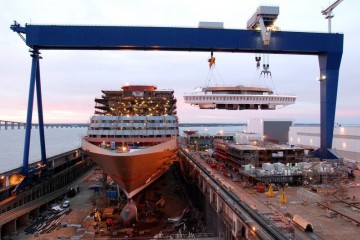Shipping does not get good press. The general public only hears about us when there is a disaster, is a favourite riddle at shipping conferences, often followed by: media do not report enough about the great and silent work of transporting 90% of world trade.
If only things were so simple. These days, we hear more and more about how shipping handles big societal issues – and the bad press related to it is completely of its own making. One of the more spectacular examples of what could be called a strategic disaster relates to carbon emissions of shipping.
This is the situation
Shipping’s carbon emissions have grown spectacularly over the last decades, have halted since the economic crisis and are expected to grow substantially in the future. The carbon intensity of shipping has decreased somewhat but not enough to offset the effects of growing trade. Shipping is not explicitly mentioned in the Paris climate agreement, but expected to work out its response to climate change within the framework of the International Maritime Organisation (IMO).
How has shipping dealt with it?
A friendly answer would be: It has done what it could. A slightly nastier answer would be: It has taken the path of least resistance. It has taken pride in a 10% emissions reduction between 2007 and 2012, caused by halted trade and slow steaming. It has come up with an Energy Efficiency Design Index (EEDI), described as “the first legally binding climate change treaty to be adopted since the Kyoto Protocol”, a regulation that mainly codifies energy efficiency measures that would have happened anyway. And the shipping community has been occupied with long and heated discussions about data collection. It did what seemed feasible considering big internal divisions. But whilst kicking the can down the road, the shipping sector commits at least two strategic errors:
1. Mediocre management of expectations
Many shipping representatives feigned unhappiness with the Paris agreement: how they would have loved shipping to be in it! But, no worries, they understood the spirit of Paris and would push for strong measures at the IMO. Four months later, at the IMO, after days of discussions, even the idea of forming a working group to propose a way forward was almost a bridge too far. After the meeting, the Secretary General of the IMO made an heroic effort to define the approval of data collection as a major breakthrough, but it seemed a bit meagre compared to the emissions trading scheme that the aviation sector was discussing.
Another six months later, at the eve of another IMO environmental meeting – taking place this week – a whole collection of shipping associations call for “ambitious action” in reaching a target for shipping’s carbon emissions. These are the same representatives that have submitted a proposal to “develop a road map to determine a possible IMO fair share contribution, which initially focuses on the development of a timeline, consistent with the ‘three step’ approach“. See how ambitious it is? This is not about setting a target for shipping in line with the Paris agreement, this is code for: we will think about a date at which we might say more about how a target could look like if ever we feel we are ready for it.
Start to see the pattern? Each time we hear big words, only to be confronted with shrill outcomes when the meetings are over. So, we go from disappointment to hope to disappointment; a process that is unsustainable, even dangerous for the shipping sector, because it erodes its credibility. The reason why this happens is not cognitive dissonance, but a disproportionate confidence in its lobbying capacity. But the way it lobbies represents its second strategic error.
2. Lobbies for the status quo
Page one of the handbook for shipping lobbyists must be: “say no to every proposal that threatens the status quo”. An example: the intense lobbying to keep shipping out of the Paris climate agreement and leave this discussion to the IMO. Another example: the recent lobby of shipowners’ associations to get Euro-parliamentarians in the industry committee to vote against inclusion of shipping into the EU Emission Trading Scheme (ETS), even if is the environment committee – in favour of it – that is in charge of the discussion. The shipping sector lobbies against what it does not want, rather than for what it wants. It says it wants global regulation for a global industry, so why does it not push for its own proposal of a global market based mechanism? Are any of the Europeans talking to the Chinese or other emerging economies to facilitate more ambitious actions with regards to decarbonising shipping? Are national shipowners associations lobbying their national governments to put into action the ambitious ambitions to which they pay lip service?
Even if it might work in the short term, the nihilistic lobbying, combined with mediocre management of expectations will bring shipping the exact same thing it wants to avoid: regional measures.
Almost a year after COP21, the shipping sector is in an awkward position. Nowhere near a target that could bring it in line with the Paris agreement and outmanoeuvred by the aviation sector that managed to pull off a trick that shipping could not. Time for the shipping sector to learn from this. Nations did not count every chimney before submitting their nationally determined contributions; and the ICAO emissions trading scheme has flaws. Yet, both know where they are going and how to improve. Similar clarity is needed for the shipping sector. Building up a global data collection on fuel consumption of ships is all fine and dandy, but that should not delay the formulation of a target for shipping’s carbon emissions, nor the preparation of market-based mechanisms.
2 Comments
Comments are closed.




[…] is all about management of expectations, as I mentioned earlier. Those who were under the impression that this meeting was for once and for all going to determine […]
[…] friendly mode of transport, the new regulations help to further…www.rickmers-line.com Shipping: urgently in need of a carbon strategy – Shipping today blog Shipping does not get go… The Paris Agreement and the new logic of international climate politics This article reviews and […]